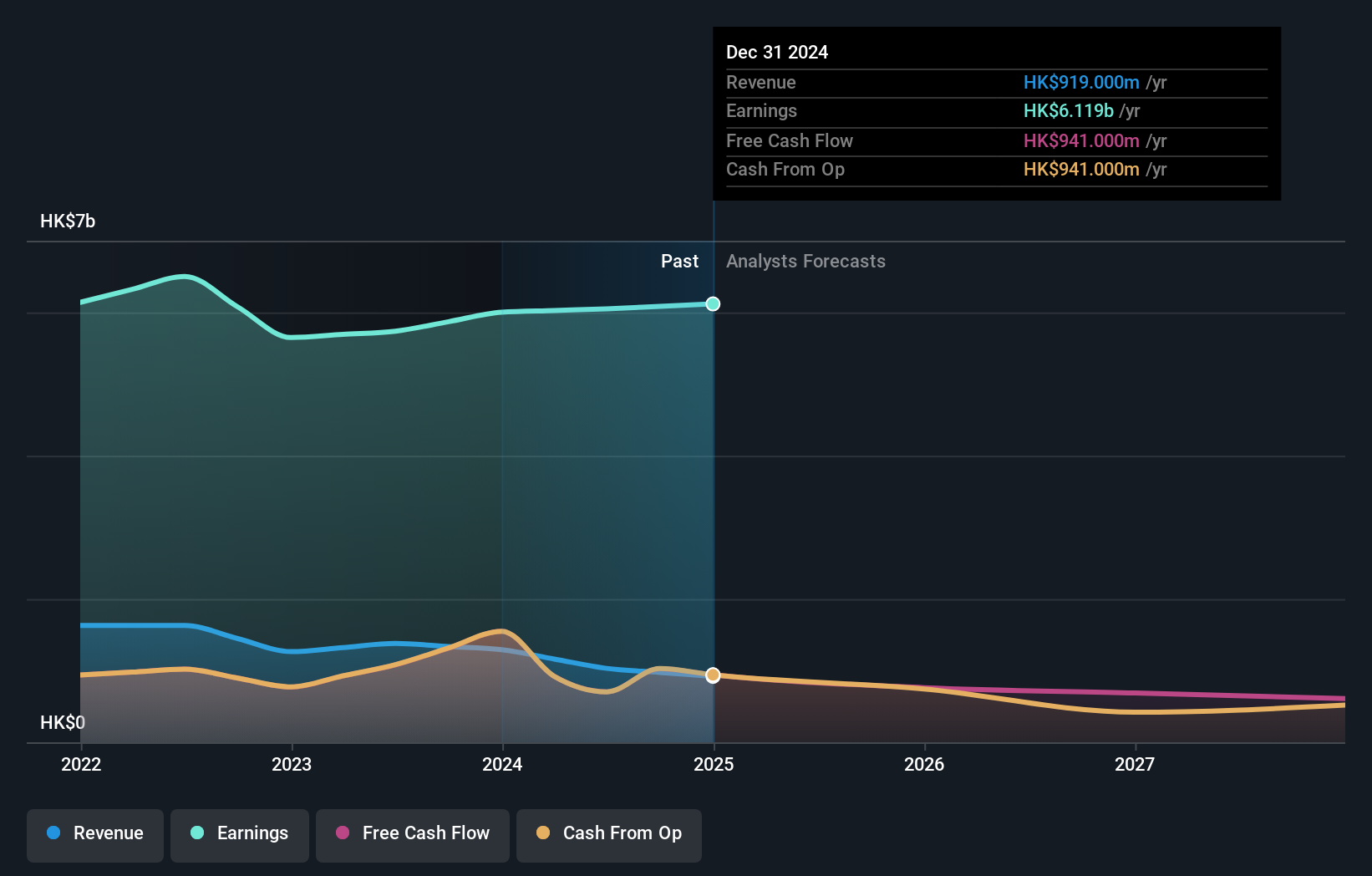- Hong Kong
- /
- Electric Utilities
- /
- SEHK:6
Power Assets Holdings Limited's (HKG:6) largest shareholders are individual investors with 48% ownership, public companies own 36%

Key Insights
- The considerable ownership by individual investors in Power Assets Holdings indicates that they collectively have a greater say in management and business strategy
- A total of 23 investors have a majority stake in the company with 50% ownership
- Institutions own 16% of Power Assets Holdings
To get a sense of who is truly in control of Power Assets Holdings Limited (HKG:6), it is important to understand the ownership structure of the business. And the group that holds the biggest piece of the pie are individual investors with 48% ownership. That is, the group stands to benefit the most if the stock rises (or lose the most if there is a downturn).
Meanwhile, public companies make up 36% of the company’s shareholders.
Let's take a closer look to see what the different types of shareholders can tell us about Power Assets Holdings.
Check out our latest analysis for Power Assets Holdings

What Does The Institutional Ownership Tell Us About Power Assets Holdings?
Institutional investors commonly compare their own returns to the returns of a commonly followed index. So they generally do consider buying larger companies that are included in the relevant benchmark index.
We can see that Power Assets Holdings does have institutional investors; and they hold a good portion of the company's stock. This implies the analysts working for those institutions have looked at the stock and they like it. But just like anyone else, they could be wrong. When multiple institutions own a stock, there's always a risk that they are in a 'crowded trade'. When such a trade goes wrong, multiple parties may compete to sell stock fast. This risk is higher in a company without a history of growth. You can see Power Assets Holdings' historic earnings and revenue below, but keep in mind there's always more to the story.

Power Assets Holdings is not owned by hedge funds. Looking at our data, we can see that the largest shareholder is CK Hutchison Holdings Limited with 36% of shares outstanding. Meanwhile, the second and third largest shareholders, hold 2.9% and 2.8%, of the shares outstanding, respectively.
A closer look at our ownership figures suggests that the top 23 shareholders have a combined ownership of 50% implying that no single shareholder has a majority.
While studying institutional ownership for a company can add value to your research, it is also a good practice to research analyst recommendations to get a deeper understand of a stock's expected performance. There are plenty of analysts covering the stock, so it might be worth seeing what they are forecasting, too.
Insider Ownership Of Power Assets Holdings
The definition of company insiders can be subjective and does vary between jurisdictions. Our data reflects individual insiders, capturing board members at the very least. The company management answer to the board and the latter should represent the interests of shareholders. Notably, sometimes top-level managers are on the board themselves.
Insider ownership is positive when it signals leadership are thinking like the true owners of the company. However, high insider ownership can also give immense power to a small group within the company. This can be negative in some circumstances.
Our data suggests that insiders own under 1% of Power Assets Holdings Limited in their own names. Being so large, we would not expect insiders to own a large proportion of the stock. Collectively, they own HK$11m of stock. It is always good to see at least some insider ownership, but it might be worth checking if those insiders have been selling.
General Public Ownership
With a 48% ownership, the general public, mostly comprising of individual investors, have some degree of sway over Power Assets Holdings. This size of ownership, while considerable, may not be enough to change company policy if the decision is not in sync with other large shareholders.
Public Company Ownership
We can see that public companies hold 36% of the Power Assets Holdings shares on issue. This may be a strategic interest and the two companies may have related business interests. It could be that they have de-merged. This holding is probably worth investigating further.
Next Steps:
I find it very interesting to look at who exactly owns a company. But to truly gain insight, we need to consider other information, too. Take risks for example - Power Assets Holdings has 1 warning sign we think you should be aware of.
If you would prefer discover what analysts are predicting in terms of future growth, do not miss this free report on analyst forecasts.
NB: Figures in this article are calculated using data from the last twelve months, which refer to the 12-month period ending on the last date of the month the financial statement is dated. This may not be consistent with full year annual report figures.
New: Manage All Your Stock Portfolios in One Place
We've created the ultimate portfolio companion for stock investors, and it's free.
• Connect an unlimited number of Portfolios and see your total in one currency
• Be alerted to new Warning Signs or Risks via email or mobile
• Track the Fair Value of your stocks
Have feedback on this article? Concerned about the content? Get in touch with us directly. Alternatively, email editorial-team (at) simplywallst.com.
This article by Simply Wall St is general in nature. We provide commentary based on historical data and analyst forecasts only using an unbiased methodology and our articles are not intended to be financial advice. It does not constitute a recommendation to buy or sell any stock, and does not take account of your objectives, or your financial situation. We aim to bring you long-term focused analysis driven by fundamental data. Note that our analysis may not factor in the latest price-sensitive company announcements or qualitative material. Simply Wall St has no position in any stocks mentioned.
About SEHK:6
Power Assets Holdings
An investment holding company, engages in the generation, transmission, and distribution of electricity in Hong Kong, the United Kingdom, Australia, and internationally.
Excellent balance sheet with acceptable track record.
Similar Companies
Market Insights
Community Narratives





